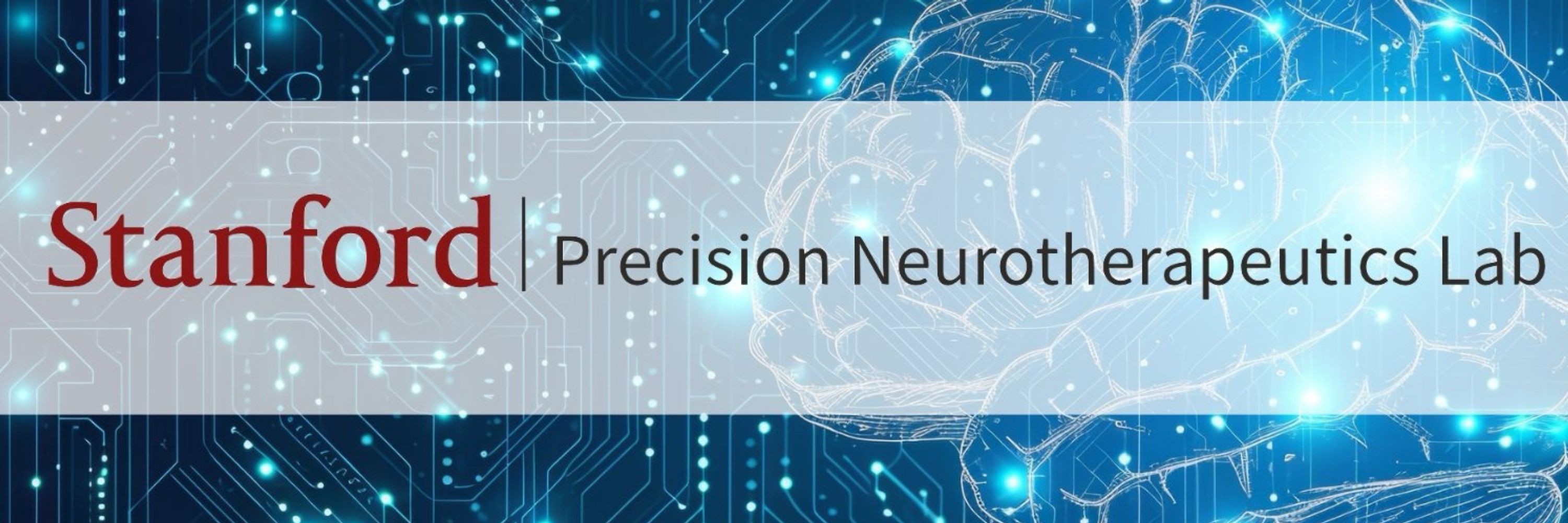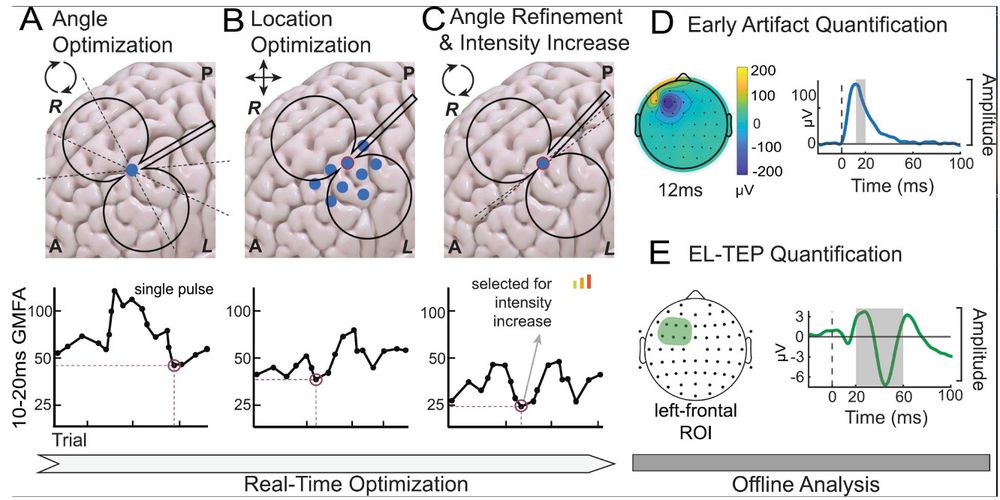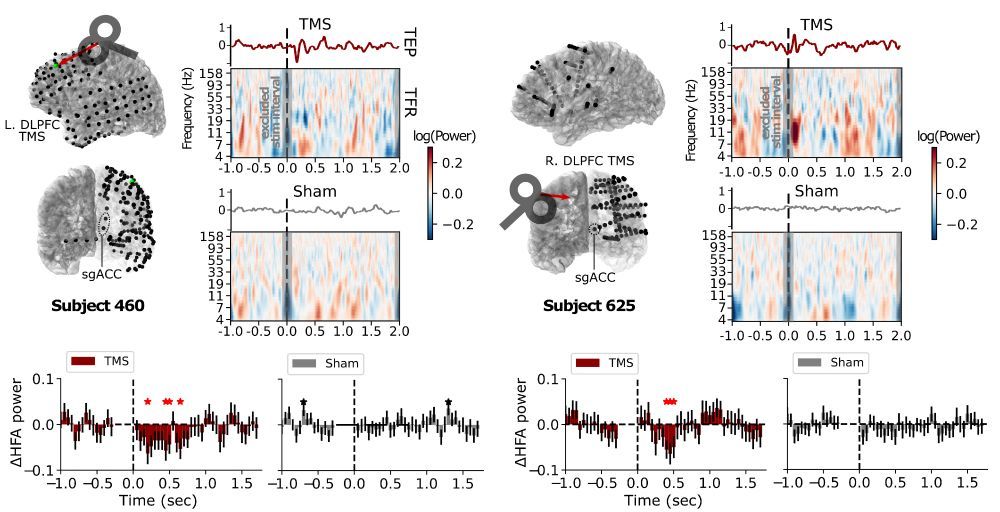
Precision Neurotherapeutics Lab @ Stanford
@stanfordpntlab.bsky.social
Deconstructing brain stimulation tools to build personalized treatments for mental health disorders.
precisionneuro.stanford.edu
precisionneuro.stanford.edu
And to the rest of the amazing team and resources! 7/7
@coreykeller.bsky.social
@juhagogulski.bsky.social
@jessicamross8.bsky.social
@stanfordpntlab.bsky.social
@stanfordmedicine.bsky.social
Manjima Sarkar, Jade Truong, Lily Forman!!
@coreykeller.bsky.social
@juhagogulski.bsky.social
@jessicamross8.bsky.social
@stanfordpntlab.bsky.social
@stanfordmedicine.bsky.social
Manjima Sarkar, Jade Truong, Lily Forman!!
y.social
April 9, 2025 at 11:26 PM
And to the rest of the amazing team and resources! 7/7
@coreykeller.bsky.social
@juhagogulski.bsky.social
@jessicamross8.bsky.social
@stanfordpntlab.bsky.social
@stanfordmedicine.bsky.social
Manjima Sarkar, Jade Truong, Lily Forman!!
@coreykeller.bsky.social
@juhagogulski.bsky.social
@jessicamross8.bsky.social
@stanfordpntlab.bsky.social
@stanfordmedicine.bsky.social
Manjima Sarkar, Jade Truong, Lily Forman!!
Big shout out to my co-first author 👏
@chrisclineneuro.bsky.social
@chrisclineneuro.bsky.social
April 9, 2025 at 11:26 PM
Big shout out to my co-first author 👏
@chrisclineneuro.bsky.social
@chrisclineneuro.bsky.social
Interested in learning more? Read the full paper in Clinical Neurophysiology! doi.org/10.1016/j.cl... 5/7
doi.org
April 9, 2025 at 11:26 PM
Interested in learning more? Read the full paper in Clinical Neurophysiology! doi.org/10.1016/j.cl... 5/7
We introduce a novel method for optimizing TMS parameters in the dlPFC. Based on EEG responses, this closed-loop procedure optimizes TMS coil angle, location, and intensity in real time. 3/7

April 9, 2025 at 11:26 PM
We introduce a novel method for optimizing TMS parameters in the dlPFC. Based on EEG responses, this closed-loop procedure optimizes TMS coil angle, location, and intensity in real time. 3/7
Why is this important? The dlPFC is a depression treatment target, but we need clinic-ready ways to measure stimulation effects. TMS-EEG can help, but artifacts obscure responses. 2/7
April 9, 2025 at 11:26 PM
Why is this important? The dlPFC is a depression treatment target, but we need clinic-ready ways to measure stimulation effects. TMS-EEG can help, but artifacts obscure responses. 2/7
This builds on influential work by
@foxmdphd.bsky.social
@shansiddiqi.bsky.social
@desmondoathes.bsky.social and many others. It would not have been possible without the support of UIowa, Stanford, and generous funding from the NIH/NIMH.
reposted from @esolomon.bsky.social
@foxmdphd.bsky.social
@shansiddiqi.bsky.social
@desmondoathes.bsky.social and many others. It would not have been possible without the support of UIowa, Stanford, and generous funding from the NIH/NIMH.
reposted from @esolomon.bsky.social
Bluesky
es.bsky.social
April 9, 2025 at 11:12 PM
This builds on influential work by
@foxmdphd.bsky.social
@shansiddiqi.bsky.social
@desmondoathes.bsky.social and many others. It would not have been possible without the support of UIowa, Stanford, and generous funding from the NIH/NIMH.
reposted from @esolomon.bsky.social
@foxmdphd.bsky.social
@shansiddiqi.bsky.social
@desmondoathes.bsky.social and many others. It would not have been possible without the support of UIowa, Stanford, and generous funding from the NIH/NIMH.
reposted from @esolomon.bsky.social
It’s important to be clear that we only had two neurosurgical patients to test these effects, so these findings need replication. But these data so far seem to align with a major hypothesis in the field: DLPFC TMS specifically alters population-level neural activity in the sgACC. 5/
April 9, 2025 at 11:12 PM
It’s important to be clear that we only had two neurosurgical patients to test these effects, so these findings need replication. But these data so far seem to align with a major hypothesis in the field: DLPFC TMS specifically alters population-level neural activity in the sgACC. 5/
We were surprised to find that, despite anticorrelated HFA signals, TMS seemed to increase phase-locking in lower frequencies (alpha and theta) between sgACC-DLPFC. Could this be a mechanism by which the DLPFC influences sgACC activity? 4/

April 9, 2025 at 11:12 PM
We were surprised to find that, despite anticorrelated HFA signals, TMS seemed to increase phase-locking in lower frequencies (alpha and theta) between sgACC-DLPFC. Could this be a mechanism by which the DLPFC influences sgACC activity? 4/
HFA signal in the sgACC was inversely correlated with HFA signal in the DLPFC, meaning that as DLPFC activity increased following TMS, sgACC activity decreased. This mirrors what we’ve known from fMRI for a long time, but now shown with direct in-vivo measures of neural activity. 3/

April 9, 2025 at 11:12 PM
HFA signal in the sgACC was inversely correlated with HFA signal in the DLPFC, meaning that as DLPFC activity increased following TMS, sgACC activity decreased. This mirrors what we’ve known from fMRI for a long time, but now shown with direct in-vivo measures of neural activity. 3/
Stimulation to the DLPFC may tamp down an overactive sgACC and relieve symptoms of depression. By stimulating the DLPFC with TMS in two neurosurgical patients with electrodes implanted within the sgACC, we found a reduction in high-frequency neural activity – a correlate of population spiking. 2/

April 9, 2025 at 11:12 PM
Stimulation to the DLPFC may tamp down an overactive sgACC and relieve symptoms of depression. By stimulating the DLPFC with TMS in two neurosurgical patients with electrodes implanted within the sgACC, we found a reduction in high-frequency neural activity – a correlate of population spiking. 2/
9/9 @juhagogulski.bsky.social @coreykeller.bsky.social @stanfordpntlab.bsky.social @jessicamross8.bsky.social @sparmi.bsky.social @stanfordmedicine.bsky.social @stanfordpress.bsky.social @nihr.bsky.social Truong J., Sarkar M.
February 14, 2025 at 10:06 PM
8/9 🔑 Key takeaways:
• Careful target selection boosts early TMS-evoked signals in dlPFC
• Most dlPFC areas can produce reliable TMS-evoked signals with optimized analysis
This work advances early TMS-evoked EEG signal as a potential biomarker for depression! #depression
• Careful target selection boosts early TMS-evoked signals in dlPFC
• Most dlPFC areas can produce reliable TMS-evoked signals with optimized analysis
This work advances early TMS-evoked EEG signal as a potential biomarker for depression! #depression
February 14, 2025 at 10:06 PM
8/9 🔑 Key takeaways:
• Careful target selection boosts early TMS-evoked signals in dlPFC
• Most dlPFC areas can produce reliable TMS-evoked signals with optimized analysis
This work advances early TMS-evoked EEG signal as a potential biomarker for depression! #depression
• Careful target selection boosts early TMS-evoked signals in dlPFC
• Most dlPFC areas can produce reliable TMS-evoked signals with optimized analysis
This work advances early TMS-evoked EEG signal as a potential biomarker for depression! #depression


